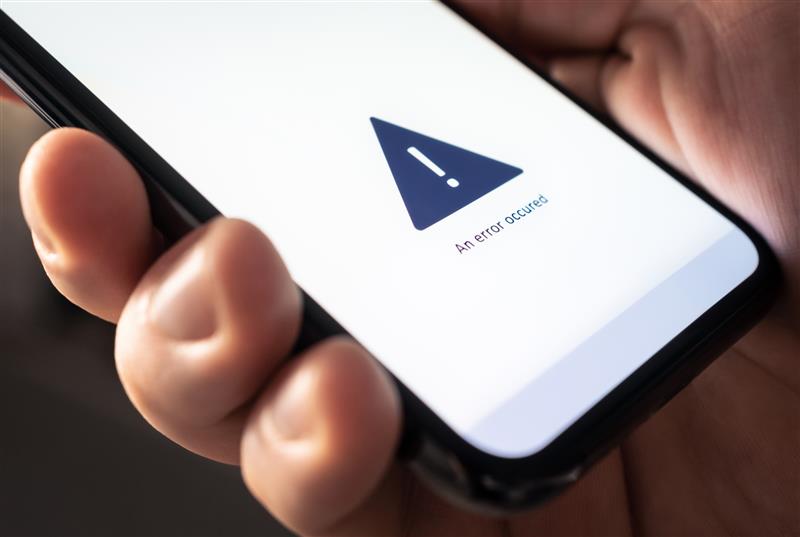Loading...
Vodafone UK Outage Triggers Customer Backlash
The Vodafone UK outage on October 13, 2025, offers a stark illustration of how non-security software flaws can cause damage comparable to cyber incidents. Although the root cause was quickly traced to a non-malicious vendor bug, customers experienced the same disruption and loss of confidence they would during a security breach. The incident illustrates that operational reliability, vendor software quality, and customer trust are closely connected. It also reinforces the need to treat all software risks, both security and non-security, with the same level of proactive management, monitoring, and accountability across IT operations.


Eric DeGrass
October 21st, 2025
The outage
On October 13, 2025, Vodafone UK experienced a large-scale outage that disrupted broadband, 4G, and 5G services across much of the country. More than 130,000 customers were unable to access the internet or use Vodafone’s apps and online status pages.
Initial speculation suggested a potential distributed denial-of-service (DDoS) cyber-attack, but within hours, Vodafone was able to confirm that the root cause was actually a non-malicious vendor software flaw, sometimes called a vendor operational bug.
From a tactical perspective, eliminating a hostile bad actor is important, but for the customer who can’t connect, the distinction offers little satisfaction. Whether caused by a DDOS attack or a vendor bug, the user experiences are virtually identical: loss of service, lack of information, and growing frustration.
Customer satisfaction versus regulatory obligation
According to Ofcom’s compensation rules, Vodafone customers would not be entitled to compensation thanks to how quickly Vodafone was able to restore service. Despite this regulatory forgiveness, many Vodafone users voiced anger online and said they would consider switching providers unless compensation was offered. The regulators may have been satisfied, but customer expectations were another matter.
Non-security bugs are still a security risk
Bad actors move quickly to exploit consumer confusion and dissatisfaction. Customers are already reporting being approached by scammers posing as Vodafone representatives arranging for refunds while collecting personally identifiable information and downloading fraudulent apps. While the root cause behind the outage itself was not caused by a security incident, it created ideal conditions for attackers ready to exploit.
Key takeaways
Operational outages can be as high impact as security breaches. Both can trigger financial loss, brand damage, and loss of trust.
Outages create secondary security risks. Even as they are managed as non-security issues, system failures can decrease an organization's defensive position against cyber threats as well as attract opportunistic scammers who launch phishing or social engineering attacks.
Vendor software quality is part of operational resilience. The business that provides a service bears the regulatory, reputational, and operational cost. The vendor is secondary even if they are at the center of the incident.
Proactive software risk management must be applied across the entire software risk spectrum from CVEs through and including non-security operational bugs. IT Operations teams need to ensure that they take proportionate and appropriate proactive steps to minimize the risk stemming from non-security vendor bugs just as they do for exploitable security vulnerabilities.
Why vendor software quality management matters
The Vodafone outage illustrates how non-security software flaws present material operational risks with financial, regulatory, and reputational consequences. It highlights the importance of tracking, evaluating, and managing vendor-related software risk in every form.
BugZero prevents operational outages before they happen
This is what animates our mission to help organizations identify, assess, and mitigate vendor operational risk. BugZero offers a single source of truth for known third-party software defects and connects them directly to ITSM solutions like ServiceNow. To learn more about how we can help your organization prevent outages before they happen, www.findbugzero.com.
FAQ
What does the Vodafone outage reveal about the difference between security and non-security failures?
The Vodafone incident showed that, for customers, the difference is largely academic. A non-malicious software flaw can have the same visible impact as a cyberattack. IT leaders should therefore treat operational reliability and software quality as integral to their security posture, not as separate concerns.
Why should IT Operations invest in managing non-security bugs as seriously as CVEs?
Because both can disrupt services, erode trust, and incur financial loss. A single vendor defect can cause widespread downtime and secondary risks, such as social engineering attacks or data exposure during remediation. Managing both categories with the same rigor reduces overall operational risk.
What can IT Operations teams do to reduce risk from vendor software flaws?
They should establish proactive monitoring of vendor updates, require transparent defect reporting, and track known operational bugs alongside CVEs. Integrating this intelligence into ITSM platforms allows for consistent risk scoring, prioritization, and remediation planning before incidents occur.
How does vendor software bug management fit into a broader resilience strategy?
Vendor oversight is not just a procurement issue. It is a resilience function that directly affects uptime, customer satisfaction, and regulatory compliance. Clear escalation paths, periodic reviews of vendor defect histories, and accountability for software quality are as essential as traditional cybersecurity audits.
How does BugZero help organizations act on these lessons?
BugZero gives enterprises a unified view of third-party software operational risk by cataloging known defects from vendors and correlating them with internal operational systems. By connecting directly to ITSM tools like ServiceNow, BugZero enables proactive detection and response to vendor operational bugs. BugZero helps organizations prevent outages before they happen.


Eric DeGrass
October 21st, 2025


Eric DeGrass
September 24th, 2025
Subscribe to our Zero Defect Digest
Sign up to receive a monthly email with stories and guidance on getting proactive with vendor risk
BugZero requires your corporate email address to provide you with updates and insights about the BugZero solution, Operational Defect Database (ODD), and other IT Operational Resilience matters. As fellow IT people, we hate spam too. We prioritize the security of your personal information and will only reach out only once a month with pertinent and valuable content.
You may unsubscribe from these communications at anytime. For information on how to unsubscribe, as well as our privacy practices and commitment to protecting your privacy, check out our Privacy Policy.
